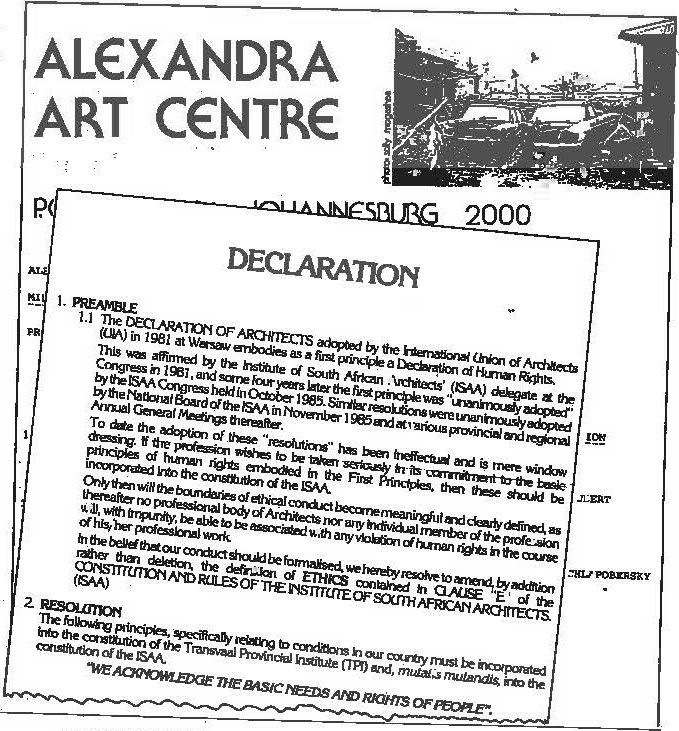
CRITICAL TOOLS (PART 1): Architectural politics in the last years of apartheid
This is the first in a series on ‘critical tools’, that helps to enable a reading of contemporary architecture in South Africa, not as zones of pure ‘disciplinary’ knowledges, but rather as a historically inflected, constructed or contingent body of thought, practices and institutions.
In this lecture I look at the sway of colonialism/apartheid in the formation of architectural politics and practice. In particular, I discuss the emergence of the informal pressure group Architects Against Apartheid (AAP) in Johannesburg in 1986, and its failed challenge to a complicit but resistant architectural status quo in the last years of apartheid.
"Many professional groups were openly challenging government policies — especially the doctors and lawyers. As a profession the architects, though, were as quiet as mice ... AAP members tried to make colleagues aware of how the gross application of apartheid ideology to architecture was distorting the moral and ethical basis of the profession in South Africa." (Schlapobersky et al 1994:17)
Sources:
Schlapobersky, I., Chipkin, C. & Paine, H., 1994, ‘Architects Against Apartheid (AAP)’, Architecture SA: Journal of the Institute of South African Architects 1994 (March–April), 17–18.
